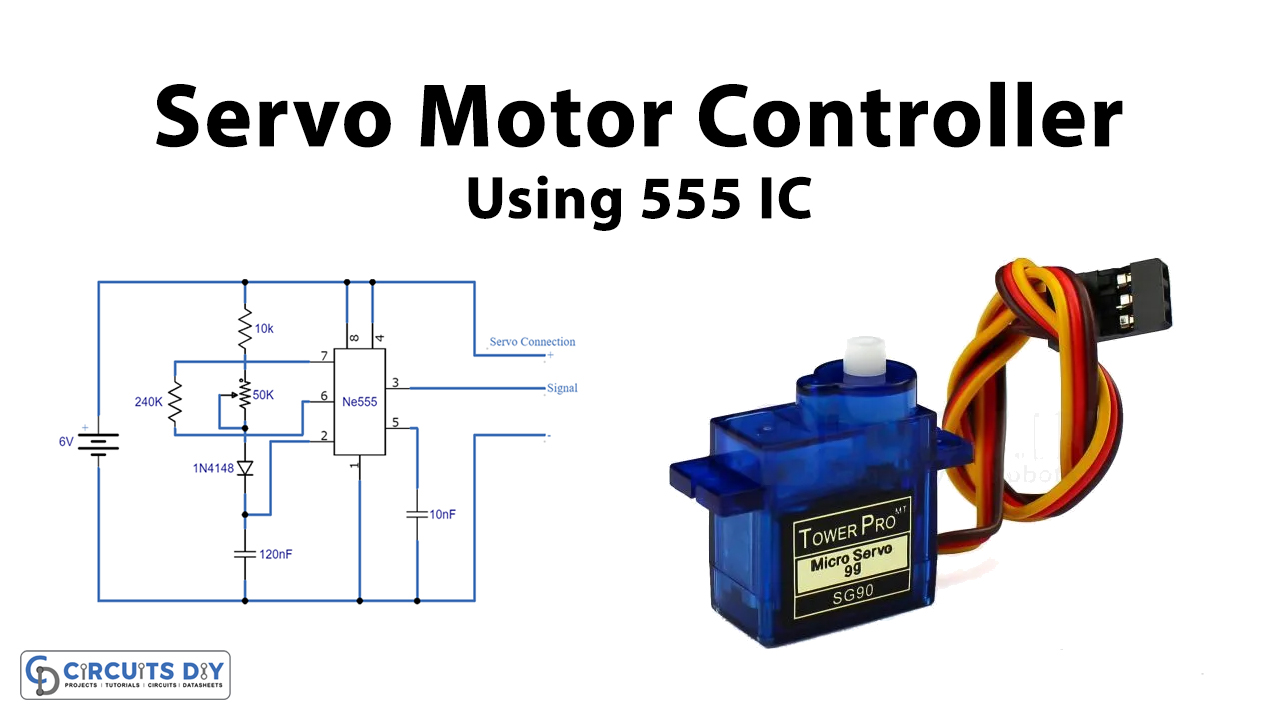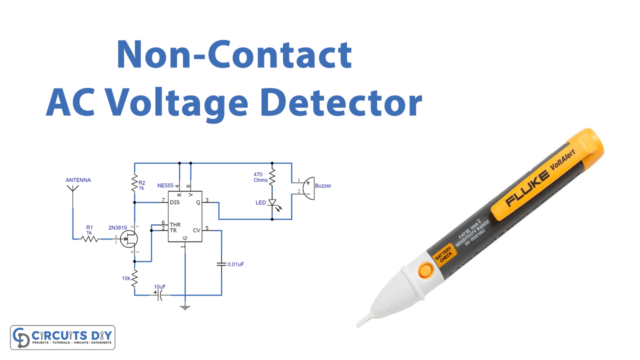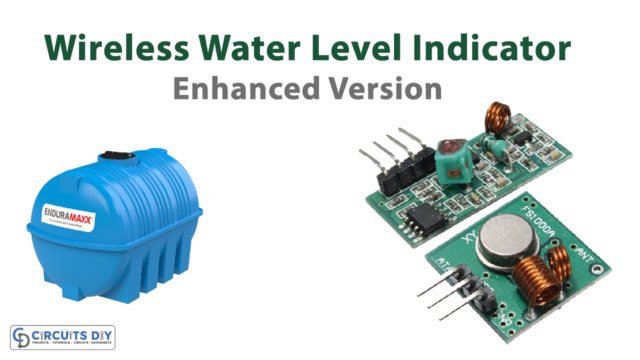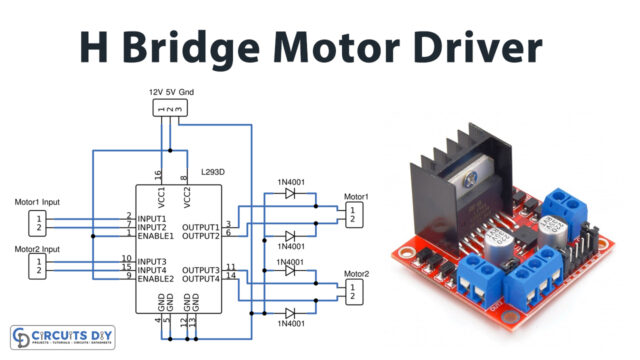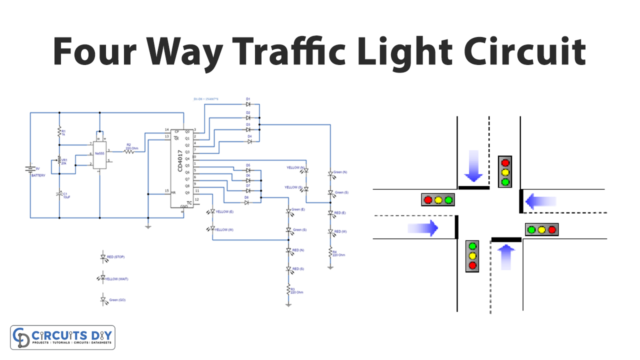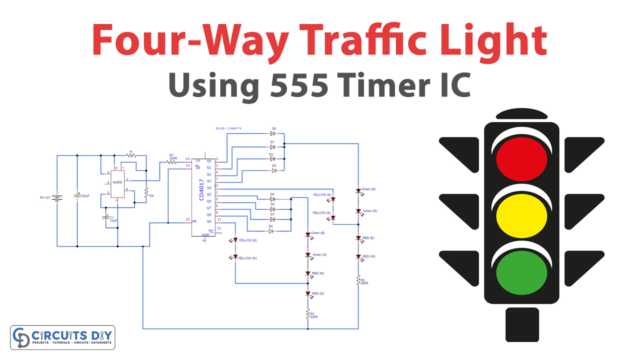In this project, we are making a “Servo Motor Controller using 555 Timer IC”. A servo motor is an “actuator” that is used to control the angular position, velocity, and acceleration. Servo motor operates at the “PWM” principles, which implies its angle of rotation is constrained by the span of the pulse applied to its “Control PIN”. Fundamentally servo engine is comprised of a DC motor that is constrained by a variable resistor which is known as a “Potentiometer” and a few gears.
We can make a servo motor controller circuit with different strategies but here we are using a simple method for making this basic servo controller circuit in which the primary component is a 555 timer IC. A servo motor is an extremely proficient DC motor that is constrained by electrical signals.

Hardware Components
The following components are required to make Servo Motor Controller Circuit
| S.no | Component | Value | Qty |
|---|---|---|---|
| 1. | Resistor | 10K, 240K | 1, 1 |
| 2. | IC | NE555 Timer | 1 |
| 3. | Variable resistor | 50K | 1 |
| 4. | Ceramic Capacitor | 120nF, 10nF | 1, 1 |
| 5. | DC Supply | 6V | 1 |
| 6. | Diode | 1N4148 | 1 |
555 IC Pinout

For a detailed description of pinout, dimension features, and specifications download the datasheet of 555 Timer
Servo Motor Controller Circuit
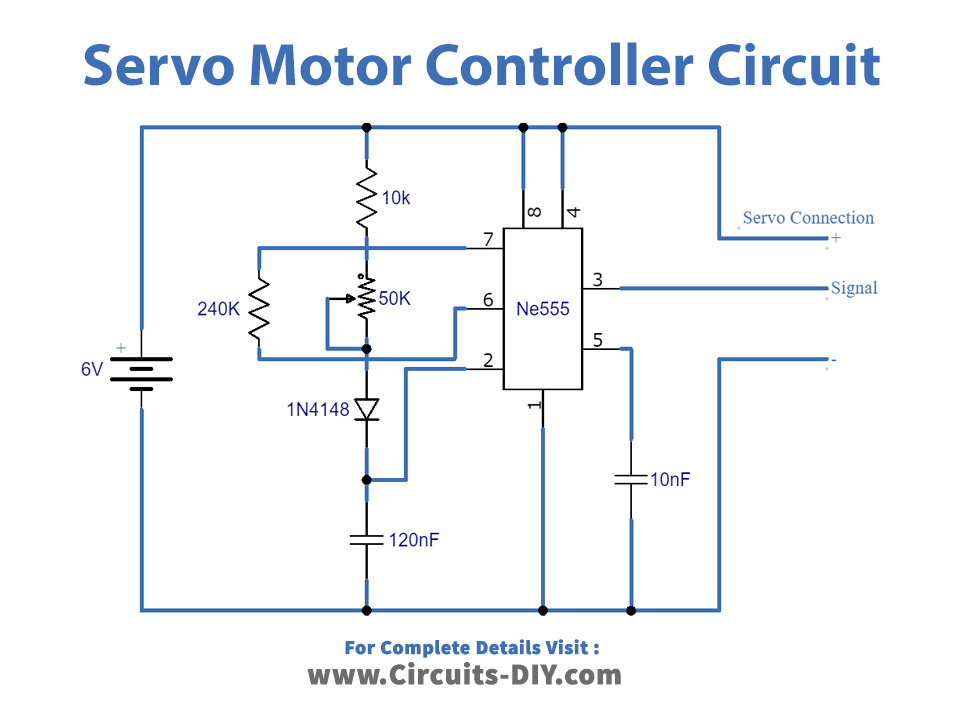
Working Explanation
In this circuit, we are using a few components that are low-cost and easily available in the electronics market. We are using resistors of 10 K and 240 K, 1N4148 diode, 555 timer IC, a variable resistor of 50 K, capacitors of 120 nF and 10 nF, and a 6 V battery. The circuit referenced here is a “pulse generator” in which we utilized a 555 timer IC in “Astable mode”. The length of yield pulses can be balanced with the 50 K variable resistor. Further adjustment should be possible to get the necessary output pulse by changing 10 K, 50 K, and 240 K resistors. The working voltage of the circuit is 6 V DC.
Applications and Uses
The Servo motor controllers are used in:
- Printers
- Solar tracking devices
- Robots
- Antenna positioning frameworks
- Cameras and numerous other modern applications.


